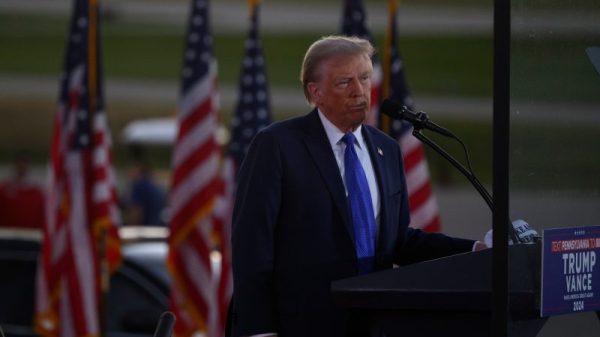Cannabis legalization in countries around the world has helped kickstart a brand-new investment landscape. As the global cannabis market matures, are you thinking about investing in cannabis companies?
A wide spectrum of cannabis stocks, from small to large cap, have made their mark on the industry as recreational and medical markets emerge and develop across the world. Increased attention from established industries, including pharmaceutical and beverage companies, has also helped make cannabis mainstream.
What’s to come is anyone’s guess, but it seems this burgeoning industry still has room to grow, with diverse nations beginning to move forward with plans for bringing cannabis to the market on some level.
Although publicly listed cannabis companies have seen ups and downs as the market matures, the long-term promise of the sector means there’s likely still money to be made in cannabis stocks in the coming years. Opinions differ widely on how much the global legal cannabis market will be worth in the years to come, with estimates including US$102.2 billion by 2030 from Grand View Research and a whopping US$178.5 billion by that same year from ReportLinker.
But one thing is almost certain: The cannabis market is set to grow as opinions surrounding the plant evolve over time and as new products crop up to supply different consumption preferences. All of that will mean more investment opportunities in both existing cannabis companies and future entrants to the market.
For now, let’s take a look at where you can invest your money at this point in time.
What to consider when investing in a cannabis stock?
There are a number of elements to consider before you decide to invest in cannabis.
Prior to putting money into a company, you should be aware that different jurisdictions will have varying levels of public support and government funding, as well as specific regulations for cultivation and export. Legality is also key — whether cannabis is being grown and used recreationally or medically can affect how stocks in a given market perform.
Those looking to invest in cannabis will also want to look into licensing requirements. For instance, in Canada, licenses are available for large-scale growers, as well as for companies involved in processing, research, authorized retail for non-medical sales and more. However, a license can take months or even years to be approved, so even if a company has applied for a license, it’s important to try to learn when the application was placed and how close it is to approval.
Other factors to consider when performing due diligence on a cannabis stock are a company’s branding strategy, balance sheet and how much experience its management team has in the field.
To learn more about how to pick the right cannabis stocks, click here.
How to invest in cannabis in the US and Canada?
What if a cannabis stock meets all of the above criteria — does that make it a good investment?
The different regional laws around cannabis mean even if a company looks good on paper, there are other parameters to consider. A good example is the US cannabis industry. While there are successful US cannabis stocks, it’s important to understand that the market is fragmented — some states have legalized the drug, but it remains illegal at the federal level.
For that reason, American cannabis stocks may be riskier than those in, say, Canada. Of course, as the saying goes, the greater the risk, the greater the possible reward. Revenue from the US market could grow to an impressive US$40.1 billion by 2030, and that’s not even including the size of the market if nationwide legalization happens. It’s easy to see that US cannabis stocks could inherit a huge chunk of the pie if the drug is finally legalized at the federal level.
At the same time, Canada, which has legalized both medical and recreational cannabis at a country-wide scale, has its own set of challenges. In the early days, Canada was the obvious place to start investing compared to the US, and while investing in cannabis in Canada can still be lucrative, the situation has changed since 2018.
Although the Canadian cannabis market is home to major players, more recently analysts have pointed to changing tides, with high excise taxes and a flooded market that includes competition from illicit sellers; these issues have resulted in large-cap Canadian cannabis companies losing market share compared to US cannabis firms.
Some smaller-cap Canadian cannabis companies have managed to thrive with a focus on unique products, but the US is frequently heralded by experts as the place to be. Still, the Canadian cannabis market is forecast to reach C$8.8 billion in sales by 2027, according to a report by the Brightfield Group. A study done by the firm shows that consumer demand for pre-roll, vape and dried flower products is driving growth in the nation’s cannabis market.
It’s worth noting that many major Canadian cannabis companies have listings on large stock exchanges domestically and in the US. This isn’t the case for flower-touching American cannabis companies — because cannabis is federally illegal in the US, they can’t list on the country’s large stock exchanges; instead they are often seen on Canadian and OTC exchanges.
For a list of US and Canadian cannabis stocks to consider, click here.
How to invest in cannabis globally?
The cannabis market is also gaining traction outside of North America.
For example, Australia federally legalized medical cannabis in 2016, and there are a number of publicly traded companies creating products for patients. While the country’s medical cannabis industry is heavily regulated, there has been steady — albeit slow-paced — growth, with patient access and use expanding alongside public support for legalization.
As for recreational use, a handful of states and territories have enacted some form of decriminalization. Going against Commonwealth cannabis law, the Australia Capital Territory has taken the most robust approach — as of 2019, there is no penalty for personal possession of up to 50 grams or growing up to two plants.
Full legalization of adult-use cannabis in the country continues to face political challenges, but 2023 has seen the introduction of multiple pieces of legislation geared at making it happen. Members of Parliament from Australia’s Legalise Cannabis Party put forward bills in Victoria, Western Australia and New South Wales to legalize personal possession, and at the federal level a Greens senator introduced the Legalising Cannabis Bill 2023. Although it faces a difficult path, if passed in its current state, the federal bill would create a commercial cannabis market.
Looking forward to the future, Prohibition Partners’ 2022 Oceania Cannabis Report notes that this region of the cannabis industry is still in the early stages, but states that there is “a very real opportunity for businesses.”
For a list of Australian cannabis stocks to consider, click here.
In Europe, many countries have legalized cannabis for medical use. Taking it further, some European countries, including Germany, have set their sights on recreational cannabis after the UN Commission on Narcotic Drugs took the material off its list of Schedule IV drugs, which includes heroin and cocaine, back in 2021.
The journey hasn’t been without setbacks — expansive plans for Germany to enter the cannabis market by 2024 were curtailed by the EU in March 2023. However, the country’s cabinet has voted in favor of a bill that allows for the private cultivation of cannabis plants in Germany, and for the drug to be sold in non-profit cannabis clubs. Germans over the age of 18 may also hold up to 25 grams for personal possession. This draft law will be in place for the next five years, after which the issue may be revisited. In the meantime, Germany will investigate how a legal supply chain affects young people and whether it results in fewer sales of cannabis on the black market.
Between 2022 and 2023, the Czech Republic, Luxembourg and the Netherlands all made announcements regarding changes to their cannabis laws. A similar trend happened in Asia when Thailand’s legalization of home-cultivated cannabis sparked a domino effect that saw even conservative countries like Japan, Malaysia, South Korea and Taiwan either move forward with legalization for medical use or loosen their laws around personal possession.
These are small steps forward, but subtle changes over time could eventually result in a successful global cannabis market. Indeed, some experts believe that a slow rollout will help regions like Europe avoid the abrupt boom-and-bust cycle that has plagued the Canadian market after recreational use was legalized overnight.
How to invest in cannabis cultivation and exports?
Cannabis cultivation is another profitable sector, and some South American countries are setting up shop as international markets. South America has ideal conditions for growing cannabis outdoors, and can easily produce mass quantities of the plant at a fraction of what it costs to grow cannabis in large climate-controlled greenhouses like in North America and Europe.
Colombia, where the climate is less humid, has become a major player in this sector. Currently, Colombia’s laws don’t allow the domestic sale of cannabis, but the cultivation and export of cannabis products and dried flower is perfectly legal. The country exported US$8.4 million worth of cannabis in 2022, and neighboring countries have taken notice. Argentina has plans to export as much as US$50 million worth of cannabis by 2025, and leaders are in talks to institute a domestic market for medical cannabis with a sales target of around US$500 million.
All of this is to say that investors don’t need to limit themselves to the North American market if they want to invest in cannabis. Cannabis cultivation companies that currently have operations in South America include PharmaCielo (TSXV:PCLO,OTCQX:PCLOF), Clever Leaves (NASDAQ:CLVR) and Khiron Life Sciences (OTC Pink:KHRNF), although they are not the only options,
How to invest in cannabis ETFs?
If you really know your cannabis companies, then you could enjoy larger gains by simply investing in those specific firms. However, if you want to play it safer or you aren’t overly familiar with the cannabis space, it could be a good idea to check out cannabis exchange-traded funds (ETFs).
Cannabis ETFs provide broad exposure to stocks in the sector and take the guesswork out of cherry picking which stock to bet on. That said, one issue with ETFs is that like any other group dynamic, if one stock drops off it brings the whole fund down proportionally with it. Of course, the opposite is also true.
Recently, investors have seen the addition of new ETFs offering exposure to the US market, including firms with entries into the hemp space, thanks to the sales of CBD products.
For a list of cannabis ETFs to consider, click here.
Final thoughts on how to invest in cannabis
No matter which way you slice it — or grind it, in this case — the cannabis market is continuing to grow and looks like it will keep expanding in the future. Whether you invest in cannabis ETFs, national or international cannabis stocks, or if you’re still waiting on the sidelines for companies with more maturity, this industry is one to watch.
Securities Disclosure: I, Meagen Seatter, hold no direct investment interest in any company mentioned in this article.





























